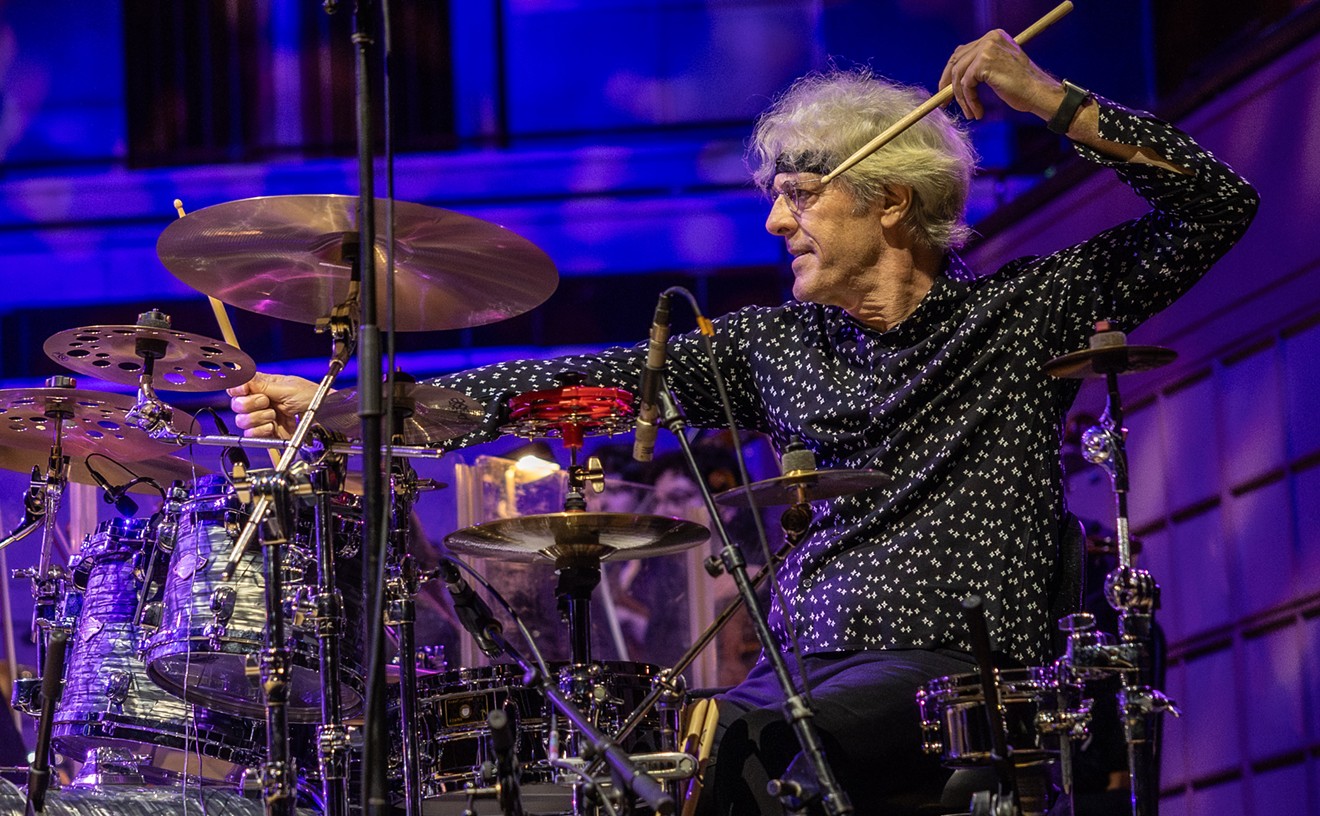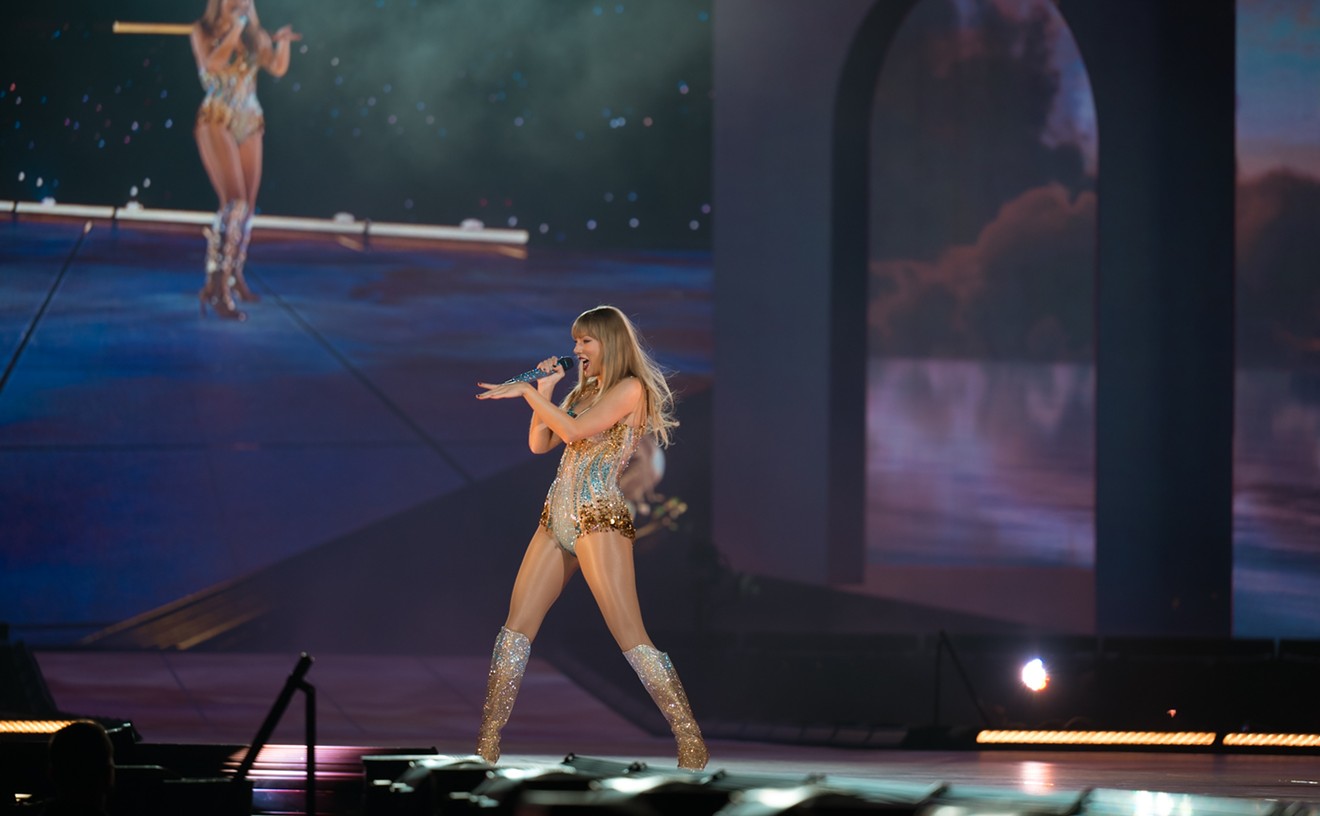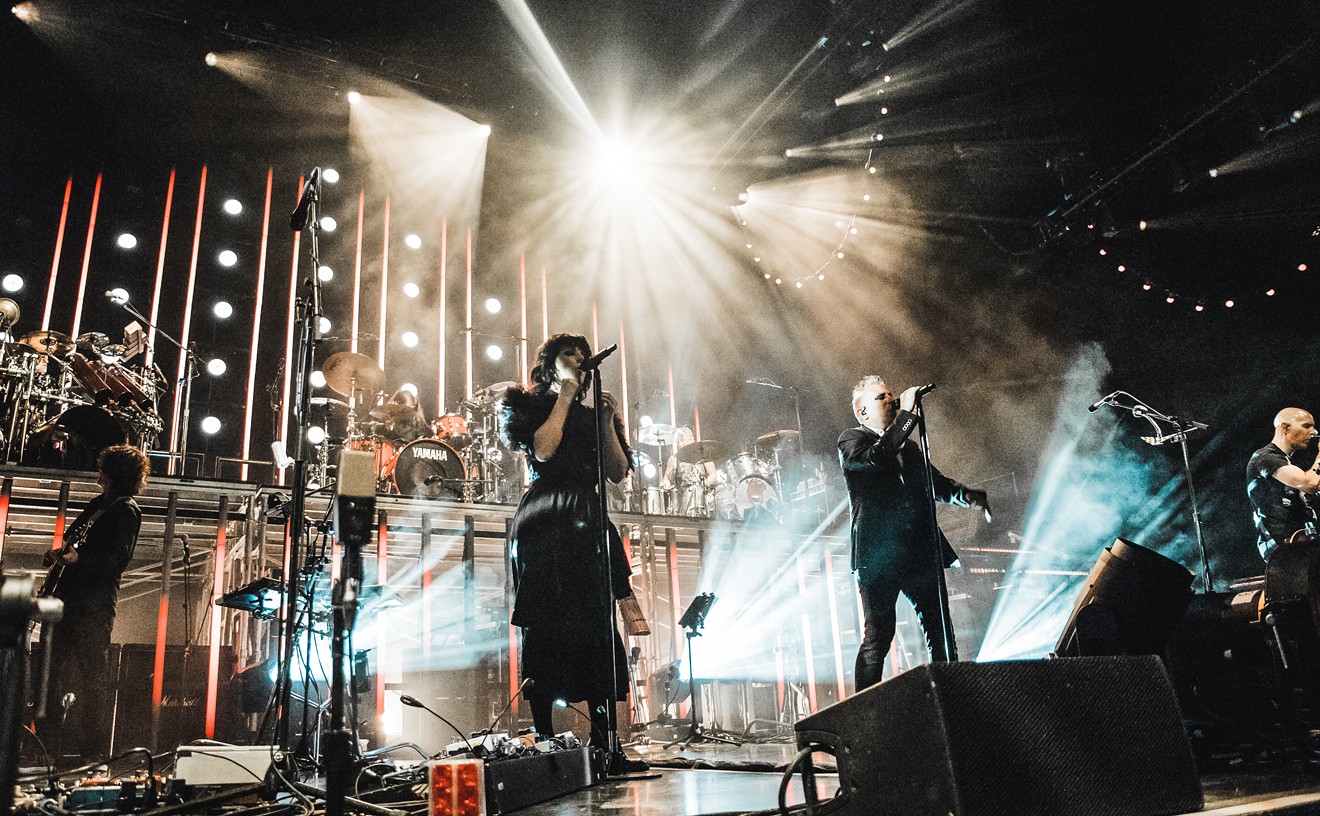Jazz in the Atrium, the longtime weekly source of live jazz music at the Dallas Museum of Art, is calling it quits after this Thursday, December 17, with a performance by the Freddie Jones Jazz Group. The series is a local tradition, a place where up-and-comers from Booker T. Washington High School and veteran jazz musicians have collaborated for decades. To out-of-towners, Jazz in the Atrium may be the most recognizable source of Dallas jazz.
“This is due to the expansion of our north entrance and the programming opportunities that will present,” says Kimberly Daniell, Senior Manager of Communications and Public Affairs at the DMA. Construction is currently underway on the outdoor space, which is scheduled for completion in April. The atrium will become part of the new entrance and an outdoor food kiosk, with a commissioned sculpture also slated to be part of the changes.
DMA has featured live jazz in the atrium since as far back as 1990, but Daniell says the name of the event wasn't officially changed to Jazz in the Atrium until 1999. The museum will still have live performances during late-night events and select live performances throughout the year. Daniel confirmed that upcoming events will still feature jazz, namely performances next year in conjunction with the current Jackson Pollock exhibit, which opened last month.
But it’s not a weekly showcase anymore. Freddie Jones, official trumpet player for the Dallas Cowboys, plays the national anthem at each of the team's home games. He has played Jazz in the Atrium a couple times a year for over a decade. “I think it’s going to be missed by the community,” Jones says. “There are people who come home to that over the holidays.”
He is proud to play the last event, but very sorry to see the series come to an end. He originally started playing acoustic sets at the DMA, but he switched to electric performances a few years ago and will perform his original compositions in that arrangement on Thursday. Over the years, Jones has been regularly surprised by how far people travel to make these events that focus on this uniquely American music. Jazz in the Atrium has been bringing new crowds to the museum for a long time.
But Jones also sees Jazz in the Atrium as something vital to the local jazz scene. “It’s been a Dallas signature thing for a while,” he says. “I know a lot of musicians from other cities. This is one of the things they all know about in Dallas.” Visiting jazz enthusiasts gravitate to Jazz at the Atrium just like they would visit 52nd Street clubs in New York City or the Green Mill in Chicago.
Looking back, Jones cites a performance from Jamal Muhammad, who focused on South Indian music for a performance at the DMA, as particularly memorable. Carlos Guedes, a Latin jazz artist who plays an electro-acoustic harp, was another standout. Vocalist Sandra Kaye brought “a very authentic jazz performance with acoustic bass and acoustic piano” to the museum. Jones even remembers the late tenor saxophonist James Clay walking into the museum and joining him for a set before his death in 1994. “Think about all the people like Roy Hargrove who have actually played the DMA on a Thursday night,” Jones says.
Back in the early 1990s, drummer Wendell Sneed took over the regular showcase in the museum’s atrium and decided he wanted it to be a weekly jazz showcase, focused primarily on local artists. He particularly remembers early shows with the late saxophonist Marchel Ivery. Sneed oversaw the series until his retirement in 2013. “I’ve always thought it was one of the best live programs in the city,” says Sneed. “It’s the perfect venue for jazz, which is America’s classical music, art for the ear.”
Sneed remembers when Shelley Carrol brought Duke Ellington’s grandson to the DMA. He remembers Holly Hofmann, one of the best jazz flute players in the country, performing in the atrium just a few years ago. “For one night a week we were the best jazz club in the metroplex,” Sneed says. “It sold itself.”
He also echoes Jones’ sentiments about the importance of Jazz at the Atrium to Dallas: “When you go to major cities, you can always ask people where the jazz is being played. We used to say that we started the weekend on Thursday night.” Jazz at the Atrium was a good starting point, a way to meet other musicians and aficionados, and find out where the other spots are.
Jazz in the Atrium is an important local tradition, a crucial part of the local jazz scene that will be sorely missed. Sneed considers all the talented musicians that played in the atrium over the years, using the platform as an important stepping-stone. He saw keyboard player Bobby Sparks on his television recently and remembered him playing at the DMA.
“It’s been a melting pot for musicians in a city that’s got a flourishing live entertainment segment in its nightlife,” Sneed says. Several musicians called him when they found out Jazz in the Atrium is ending. Not only did they want to make sure he knew, but they also wanted to thank him for starting it. “I don’t know,” Sneed says, when asked if he’ll attend the last show. “I don’t know if I can handle that or not.”
[
{
"name": "Air - MediumRectangle - Inline Content - Mobile Display Size",
"component": "18855504",
"insertPoint": "2",
"requiredCountToDisplay": "2"
},{
"name": "Editor Picks",
"component": "17105533",
"insertPoint": "4",
"requiredCountToDisplay": "1"
},{
"name": "Inline Links",
"component": "18349797",
"insertPoint": "8th",
"startingPoint": 8,
"requiredCountToDisplay": "7",
"maxInsertions": 25
},{
"name": "Air - MediumRectangle - Combo - Inline Content",
"component": "17105532",
"insertPoint": "8th",
"startingPoint": 8,
"requiredCountToDisplay": "7",
"maxInsertions": 25
},{
"name": "Inline Links",
"component": "18349797",
"insertPoint": "8th",
"startingPoint": 12,
"requiredCountToDisplay": "11",
"maxInsertions": 25
},{
"name": "Air - Leaderboard Tower - Combo - Inline Content",
"component": "17105535",
"insertPoint": "8th",
"startingPoint": 12,
"requiredCountToDisplay": "11",
"maxInsertions": 25
}
]










